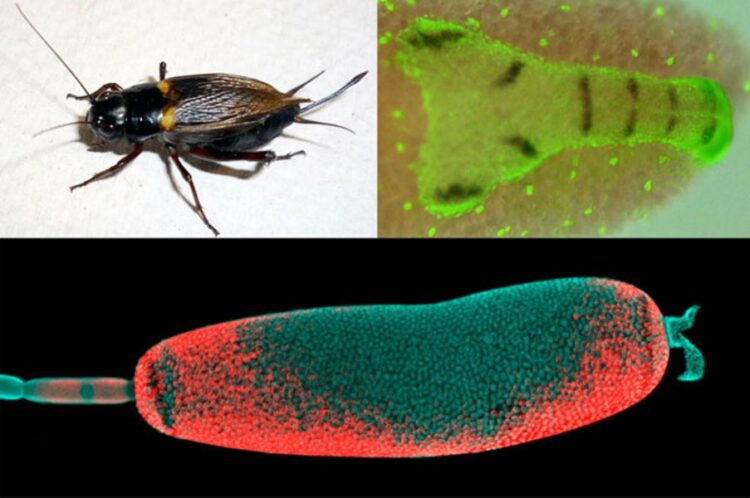Insect evolution was more complex than previously assumed

University of Cologne scientists found out that the Toll signalling pathway is important not only for innate immune response, but also for axis formation in various insects.
Credit: Roth/Pechmann
Certain signalling proteins, which are responsible for the development of innate immune function in almost all animals are also required for the formation of the dorsal-ventral (back-belly) axis in insect embryos. A new study by researchers from the University of Cologne’s Institute of Zoology suggests that the relevance of these signalling proteins for insect axis formation has increased independently several times during evolution.
For example, the research team found similar evolutionary patterns in the Mediterranean field cricket as in the fruit fly Drosophila, although the two insects are only very distantly related and previous observations suggested different evolutionary patterns. The new findings show that the evolution of axis formation in insects was actually much more complex than previously thought. The study has been published in eLife.
Signalling proteins play an important role in the early development of embryos. They are secreted by animal cells to influence the formation of other cells. The primary function of the so-called Toll signalling pathway is in the defence against pathogens (innate immune response).
In insects, it is also involved in the division of the insect body along the dorsal-ventral body axis. Since the immune function has been found in almost all animals, but the axis formation function has only been found in insects, scientists wondered about the evolutionary history of this new role. Moreover, depending on the insect species, the significance of Toll for developmental processes differs.
While axis formation in the fruit fly and flour beetle depend substantially on Toll, representatives of distantly related species, such as the wasp Nasonia and the milkweed bug Oncopeltus, rely more heavily on other signalling pathways. ‘Surprisingly, we found that the Toll signalling pathway plays a significant role in an insect that is separated by almost 400 million years from the species we studied so far,’ said Professor Dr Siegfried Roth from the Institute of Zoology.
‘The new study suggests that there might be several instances in which Toll independently acquired important functions in insect axis formation. For future studies, this means that our system allows us to explore mechanisms of parallel evolution.’
All latest news from the category: Life Sciences and Chemistry
Articles and reports from the Life Sciences and chemistry area deal with applied and basic research into modern biology, chemistry and human medicine.
Valuable information can be found on a range of life sciences fields including bacteriology, biochemistry, bionics, bioinformatics, biophysics, biotechnology, genetics, geobotany, human biology, marine biology, microbiology, molecular biology, cellular biology, zoology, bioinorganic chemistry, microchemistry and environmental chemistry.
Newest articles

Properties of new materials for microchips
… can now be measured well. Reseachers of Delft University of Technology demonstrated measuring performance properties of ultrathin silicon membranes. Making ever smaller and more powerful chips requires new ultrathin…

Floating solar’s potential
… to support sustainable development by addressing climate, water, and energy goals holistically. A new study published this week in Nature Energy raises the potential for floating solar photovoltaics (FPV)…

Skyrmions move at record speeds
… a step towards the computing of the future. An international research team led by scientists from the CNRS1 has discovered that the magnetic nanobubbles2 known as skyrmions can be…





















